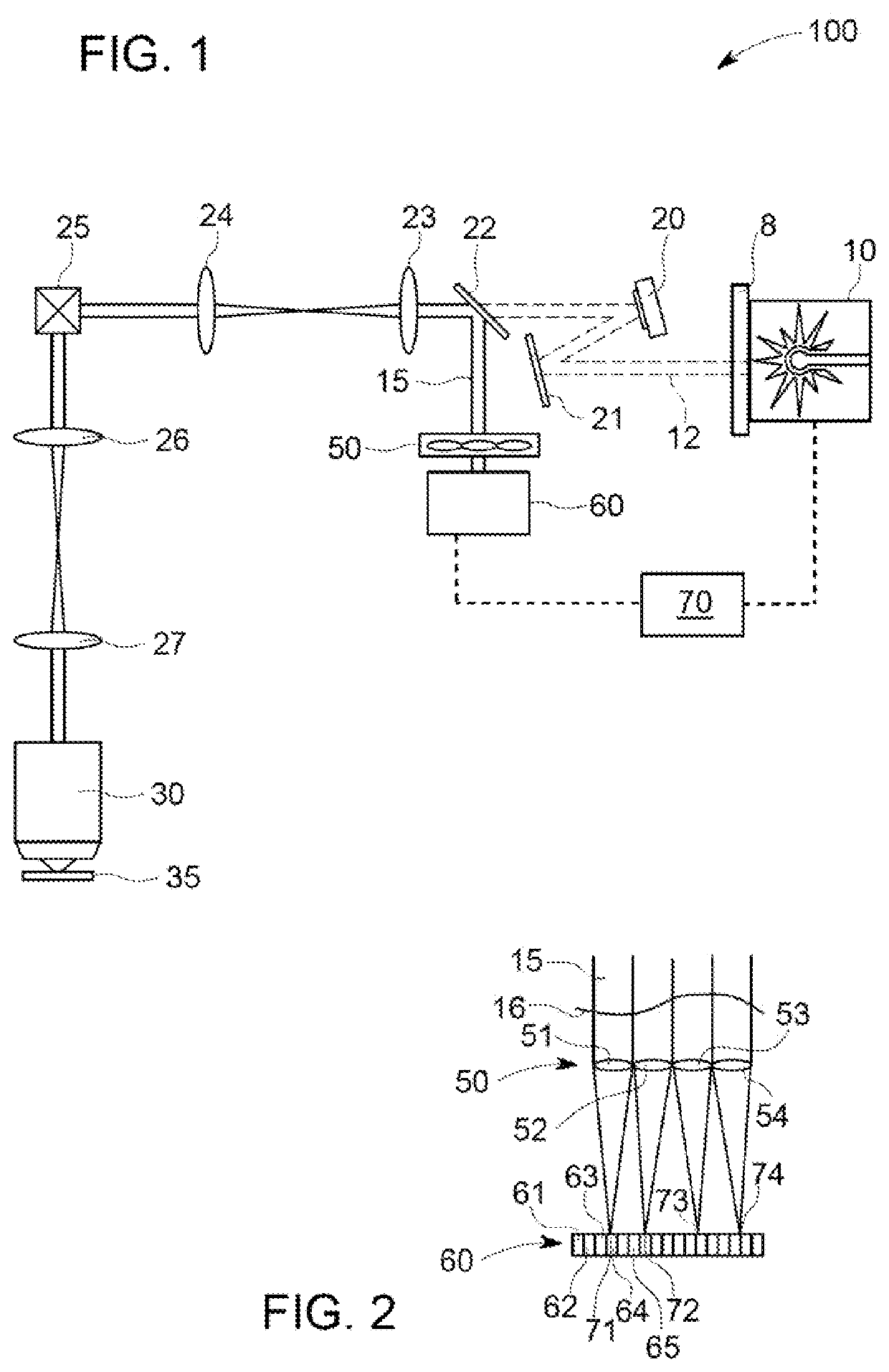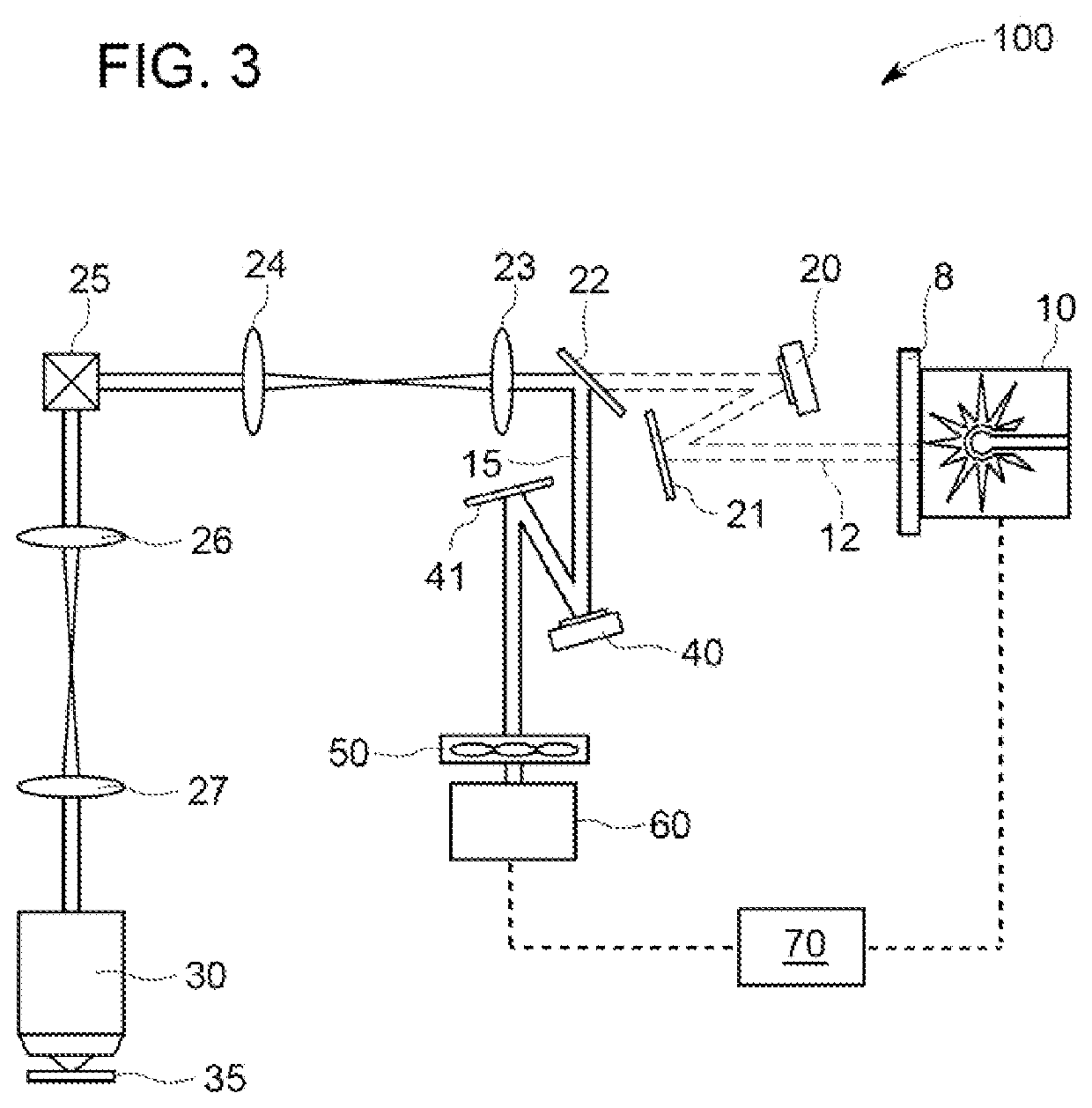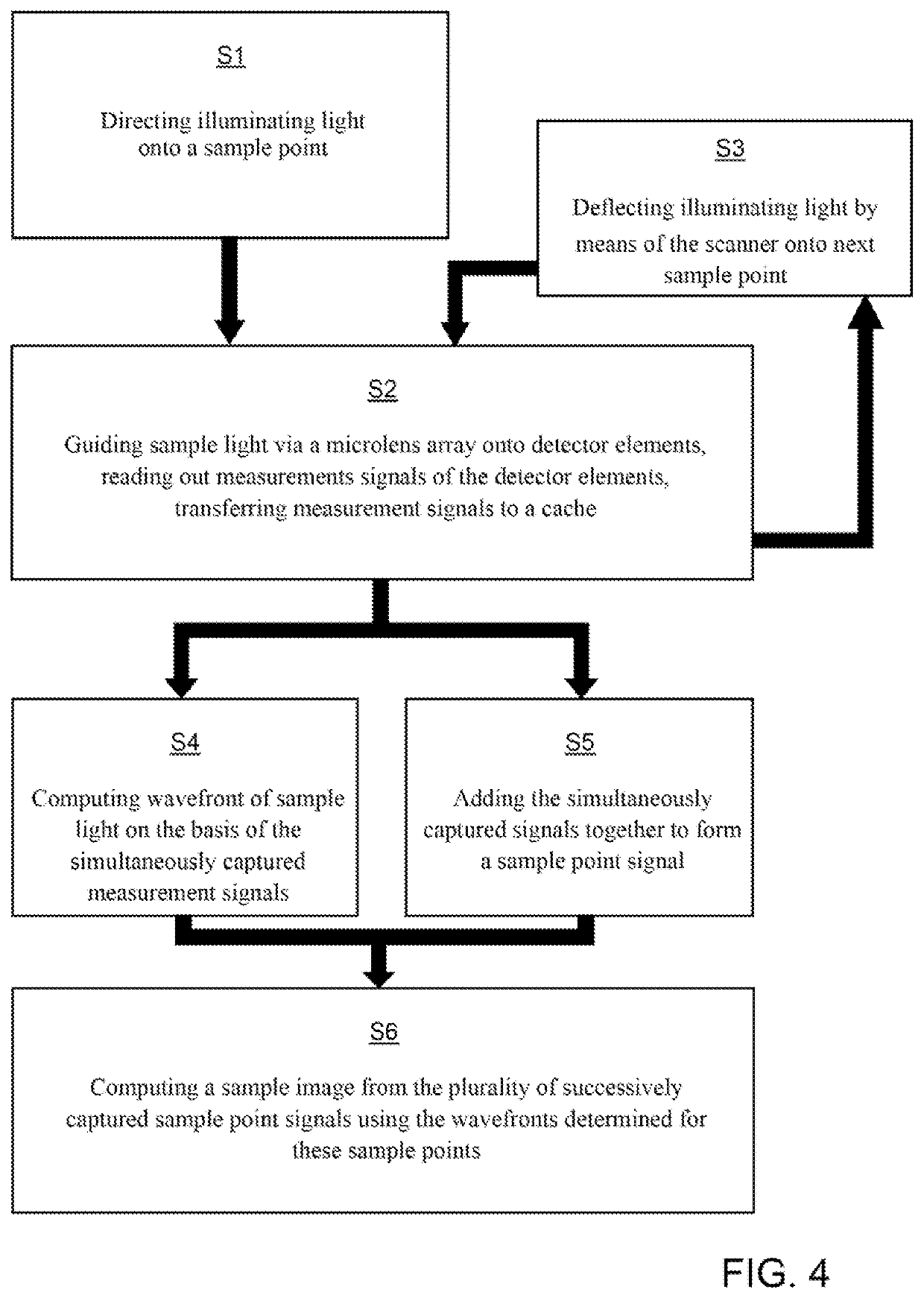Light microscope and microscopy method
- Summary
- Abstract
- Description
- Claims
- Application Information
AI Technical Summary
Benefits of technology
Problems solved by technology
Method used
Image
Examples
Example
DETAILED DESCRIPTION OF THE DRAWINGS
[0063]In general, similar components and components that function in a similar manner are designated in the figures by the same references.
[0064]FIG. 1 shows an example embodiment of a light microscope 100 according to the invention designed as a laser scanning microscope.
[0065]The light microscope 100 comprises a light-source port 8 via which illuminating light 12 of a light source 10 can be coupled. The light source 10 illustratively comprises one or more lasers. Via optional optic elements (for example, a mirror arrangement not illustrated here), illuminating light from one or a plurality of lasers can be merged into the same light path.
[0066]A sample 35 is scanned with the illuminating light 12. This means that the illuminating light 12 is focussed on a sample point and different sample points are successively illuminated according to a scanning movement. A plurality of optic elements 21, 23, 24, 26, 27 and an objective 30 are provided for con...
PUM
 Login to View More
Login to View More Abstract
Description
Claims
Application Information
 Login to View More
Login to View More - R&D
- Intellectual Property
- Life Sciences
- Materials
- Tech Scout
- Unparalleled Data Quality
- Higher Quality Content
- 60% Fewer Hallucinations
Browse by: Latest US Patents, China's latest patents, Technical Efficacy Thesaurus, Application Domain, Technology Topic, Popular Technical Reports.
© 2025 PatSnap. All rights reserved.Legal|Privacy policy|Modern Slavery Act Transparency Statement|Sitemap|About US| Contact US: help@patsnap.com



